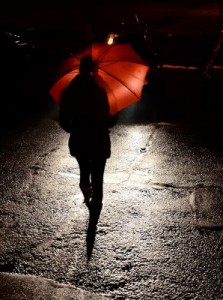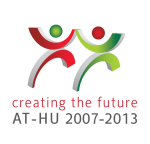
„All human beings are born free and equal in dignity and rights.”
Universal Declaration of Human Rights
Human trafficking is an infringement on every aspect of human rights and
human dignity. Perpetrators mislead, threaten, and abuse the vulnerable and marginalized. They force them into debt-bondage and credit liabilities. They apply violence, physical and psychological terror.
Victims are usually vulnerable individuals, who can be trapped not only by methods involving violence, but also by the false promise of employment. Perpetrators have a wide network of connections and highly-developed methods. In the struggle against human trafficking, coordinated government efforts, cooperation with non-governmental organizations and the sensitivity and attention of society are all necessary for developing a solution to the problem.
What is human trafficking?
Under the Protocol to Prevent, Suppress and Punish Trafficking in Persons, especially Women and Children (Palermo Protocol) of the cross-border convention of the UNO against organized crime (Palermo Convention):
“Trafficking in persons shall mean the recruitment, transportation, transfer, harbouring or receipt of persons, by means of the threat or use of force or other forms of coercion, of abduction, of fraud, of deception, of the abuse of power or of a position of vulnerability or of the giving or receiving of payments or benefits to achieve the consent of a person having control over another person, for the purpose of exploitation.”
Forms of exploitation are: coercion to prostitution or other kind of sexual activity in exchange for payment, which is taken away by pimps, thus exploiting the person procuring the money; coercion to perform some labour or service; slavery or practices similar to slavery; servitude or the illicit removal and use of organs of the human body
Human trafficking – primarily trafficking in women and children – has been one of the most oppressive phenomena in the world since the 1990s. The crime of human trafficking is the third largest and most rapidly growing branch of “industry” in the world to date. Millions of people are kept as slaves amidst conditions that make life all but impossible.
Situation in Hungary
Hungary is a source, transit, and destination country. Its status as a transit country is caused by the fact that it is one of the borders of the European Union (Schengen), consequently, it is one of the favoured routes of those involved in smuggling migrants, e.g. from Serbia to Austria. Some citizens of certain Eastern European, and other third-world countries, get stuck in Hungary, so here is where traffickers exploit them.
Hungary is primarily a source country and human trafficking within the borders is its greatest problem. Hungary sends victims of migrant human trafficking in great numbers to the West. Exploitation with the purpose of procuring labour force is becoming more and more common, however, 90% of victims still fall prey to traffickers in what may be called the “sex industry.” Young people living in extreme poverty, or in government- run child-rearing facilities, are in the greatest danger in our country. The bleak living conditions, the barren, unstimulating environment, the predominantly unsettled family background, and the lack of schooling make them easy to victimize.
Hungarians in the World 
Hungarian women and girls live abroad as prostitutes by the ten thousands, more than one thousand of them in Holland alone. Between 80-90% of girls providing sexual services in the streets and night clubs are Hungarians. More and more girls are being taken to Italy, many of them less than 18 years old.
Hungarian victims are found in great numbers in Britain, Germany, Belgium, the Netherlands, Spain, Austria, Italy, etc. Not even Mexico is beyond the reach of human traffi cking networks. Each day for 14-16 hours at a time, in freezing cold and stifling heat, without a break or any possibility to relax, these girls are forced to provide sexual services to what may be as many as 25-30 men a day. If their performance is deemed unsatisfactory by their captors, they are deprived of food and can expect violent retribution.
Why are there so many Hungarian Victims?
Due to the ever-increasing level of poverty, a large number of young people live in a situation without any prospects. They have no image of what opportunities they have for their futures. These young people are mostly children from disintegrated homes, their parents have harmful addictions and are often abusive. A characteristic trait of victims is that they have little or no supportive ties with family or friends. Children being sold by their own parents or relatives occurs frequently. Those who live under the care of government-run child-rearing facilities can become victims to adults enticing them as early as 12 years old. Little girls quickly develop an emotional bond if they receive attention such as one or two words of kindness. They are often doped with drugs, making them dependent on substances, and thus also dependent on the traffickers, who supply them with the drug.
Tricks Used by Traffickers
Traffickers enmesh victims with artful techniques. They offer easy-to-do, well-paid jobs requiring no qualification to those feeling futureless, unable to find work or on starvation wages. In many cases, people become victims in the hope that a promising future is awaiting them. In every case, traffickers develop a relationship of dependency with the victims. In the initial phase, they wheedle themselves into their confi dence, holding out promises for them. Later, they accumulate debts on their behalf, they put them to shame, they take their bank cards and personal documents from them. This is usually a procedure lasting a few weeks, but sometimes it takes no more than a few days for the victim to become defenseless.
Traffickers often resort to all kinds of methods involving violence, threats, physical abuse, sexual assault, or blackmailing the victim with the safety of a family member, typically a child. For example, in the case of exploitative begging, it is a frequent practice to cause serious bodily injury resulting in physical disability so as to arouse more pity for the child as he or she begs on the street. A feeling of shame often develops in the victims, so in most cases they dare not even ask for help.
As a further way of chaining them to themselves, the perpetrators make victims – mostly women that they force to perform sexual activities – get into the habit of taking different kinds of narcotics that quickly cause addiction. Less offensive methods include developing an emotional dependence. Traffickers promise love and a future to young women, and often seduce girls living in government- run child-rearing facilities by giving them presents. Later on, they proceed by applying the violent methods listed above. They severely limit their freedom. The victims cannot make any decisions of their own concerning their daily activities. Traffickers deprive them of, or put restrictions on, their movement, food supply and rest. In many cases, victims are held captive or locked up by traffickers and severed from any communication with family or friends. By way of punishment, they may be denied food, drink, cigarettes or even the means of personal hygiene.
Human trafficking benefits greatly from the widespread use of the Internet, and also from the ease and speed of crossing international borders and of travel in general today.
[1] http://www.ohchr.org/EN/UDHR/Documents/UDHR_Translations/hng.pdf
[2] http://www.complex.hu/jr/gen/hjegy_doc.cgi?docid=A0600102.TV





